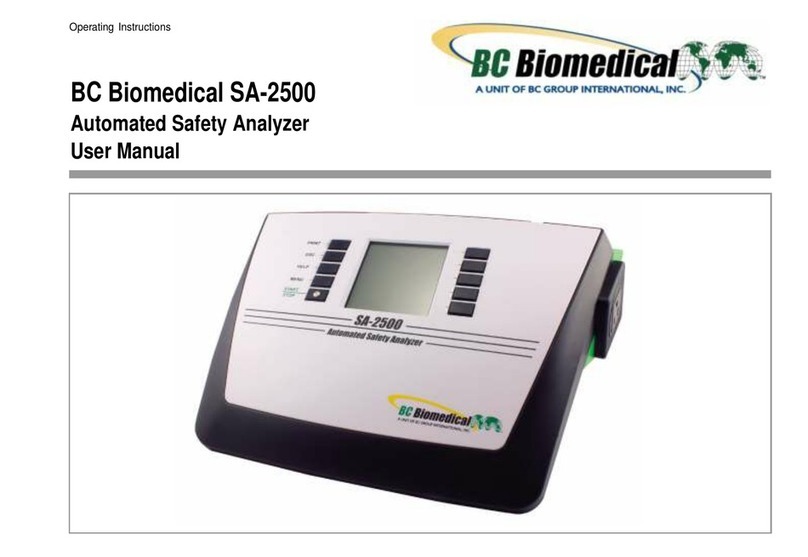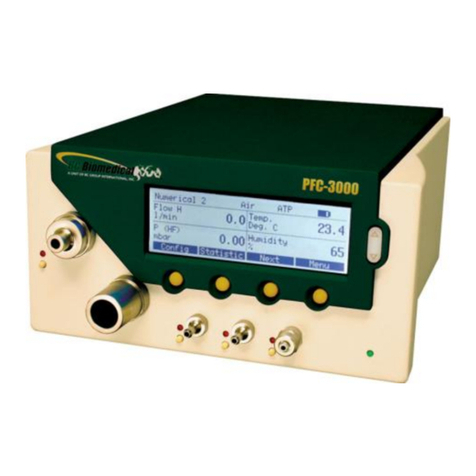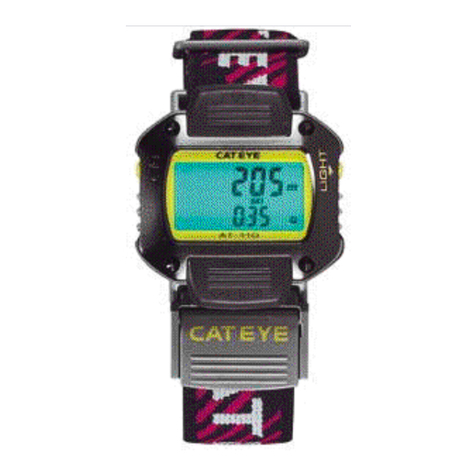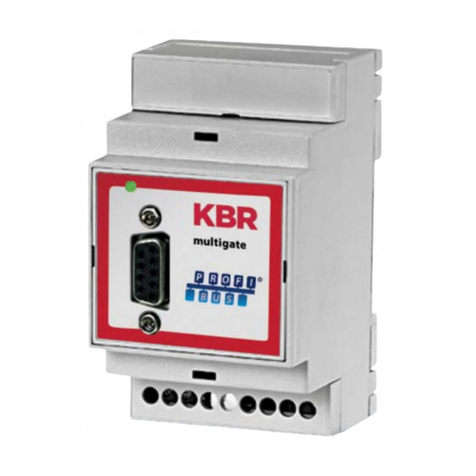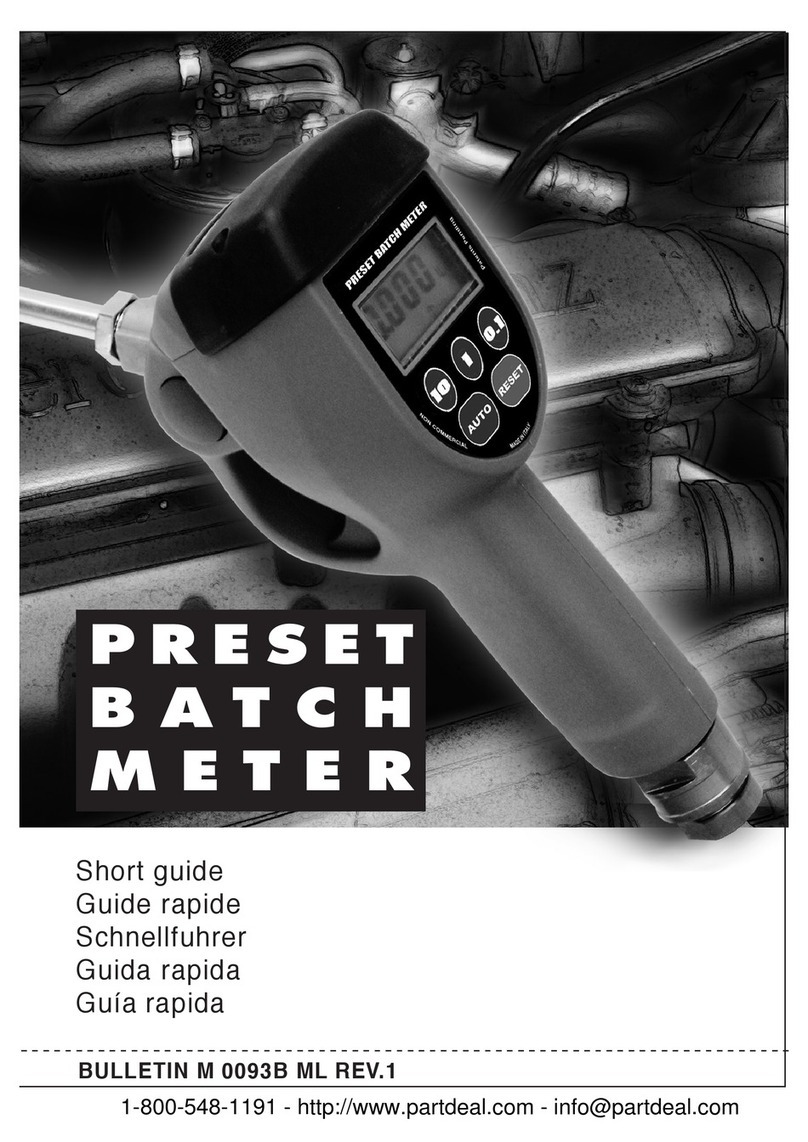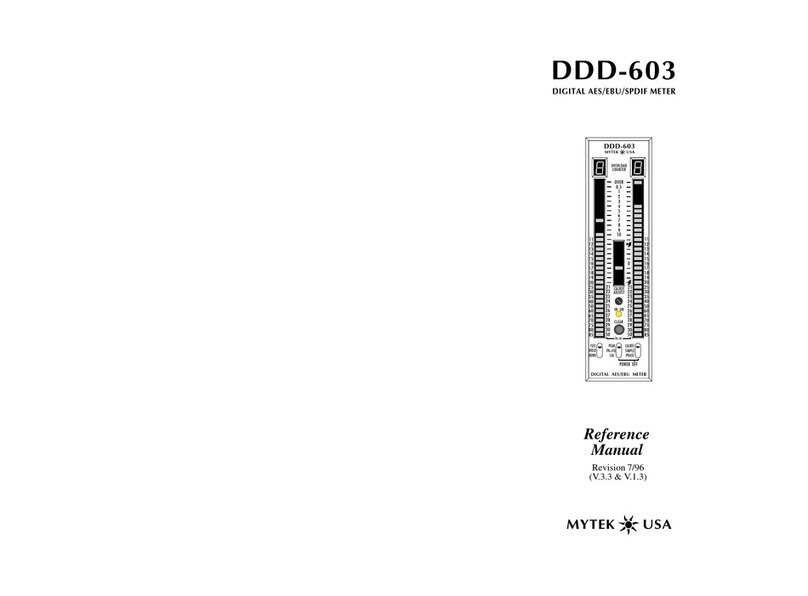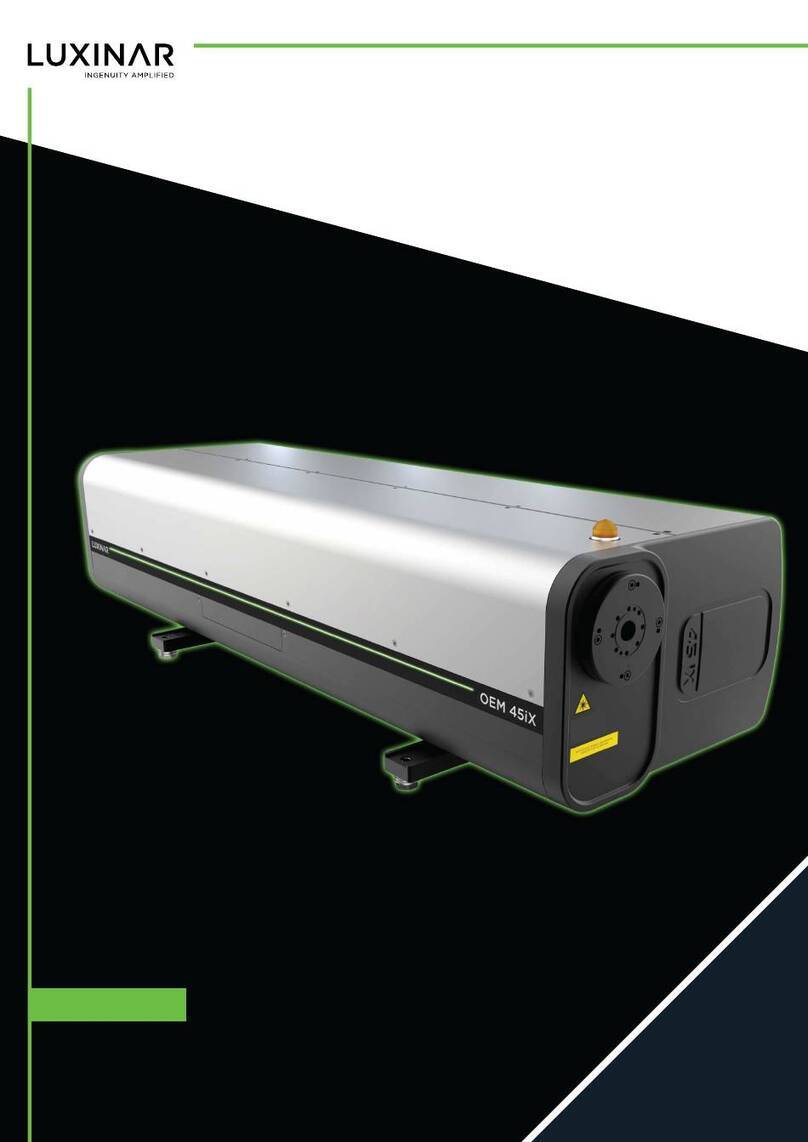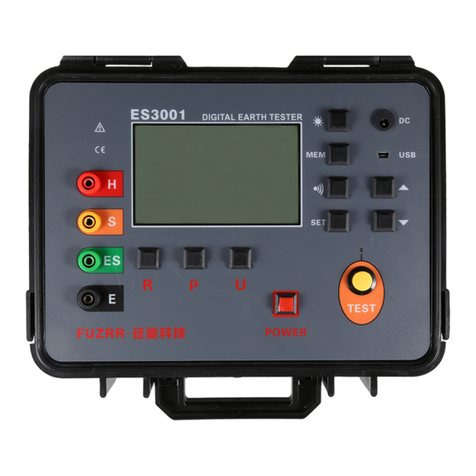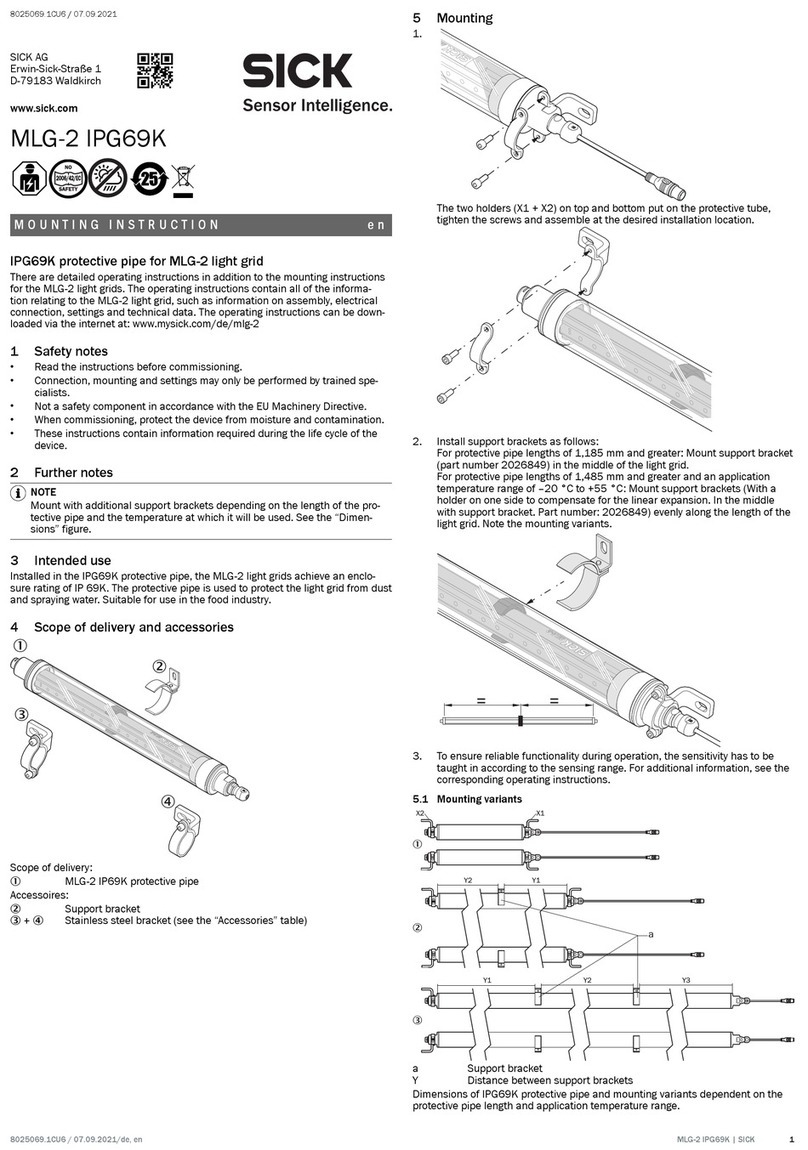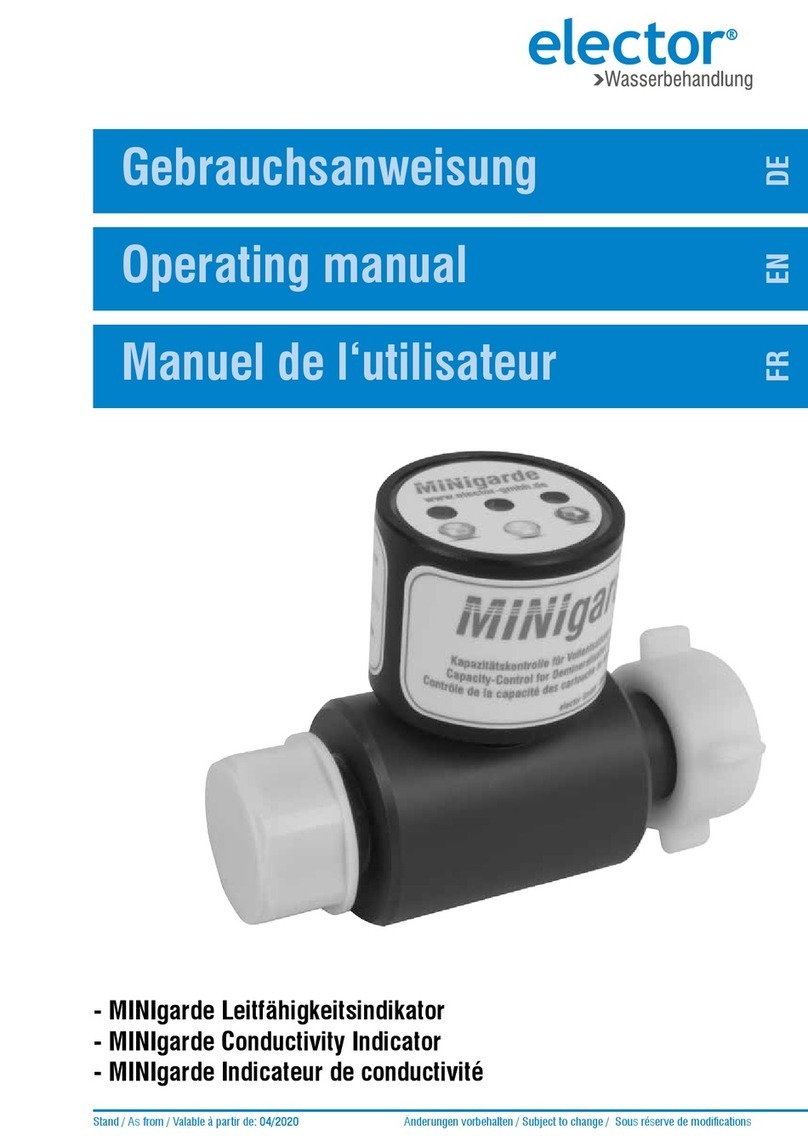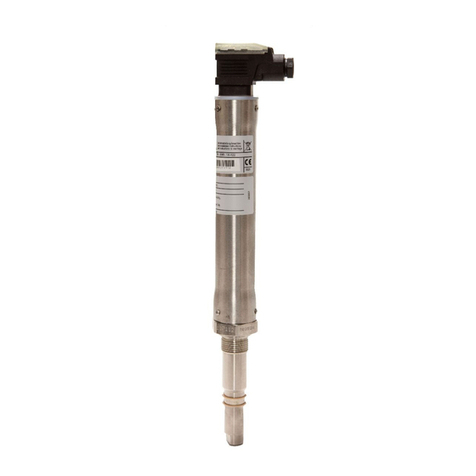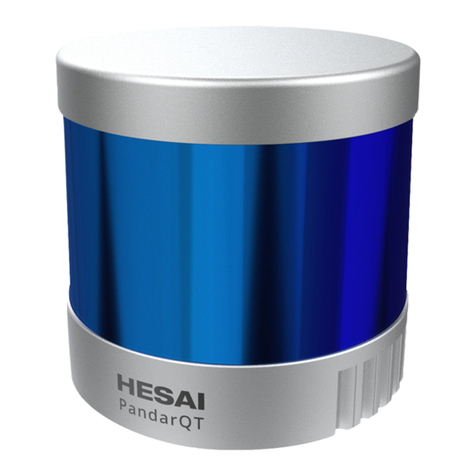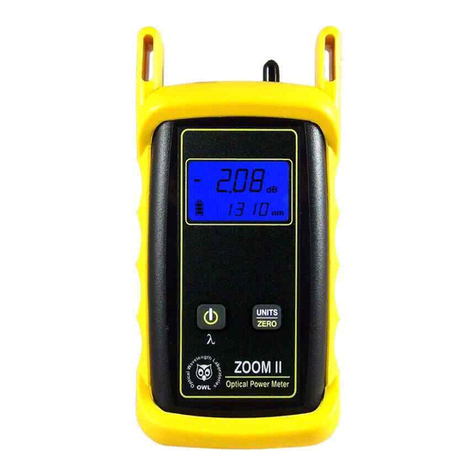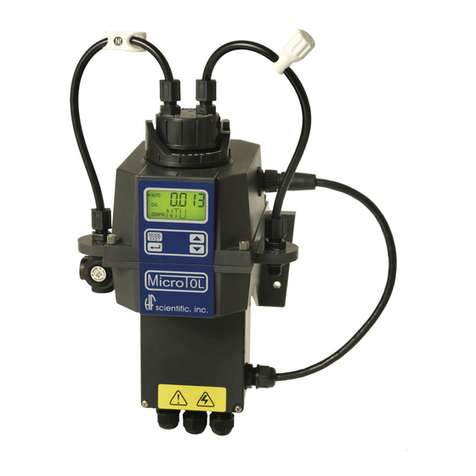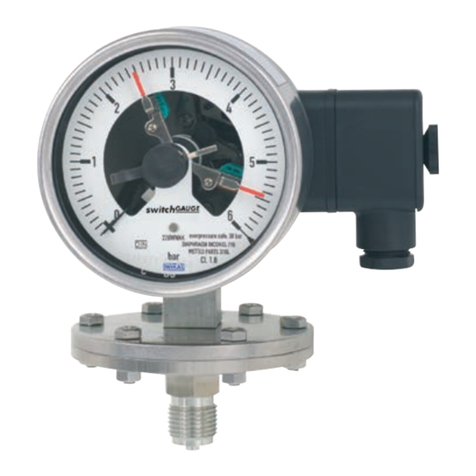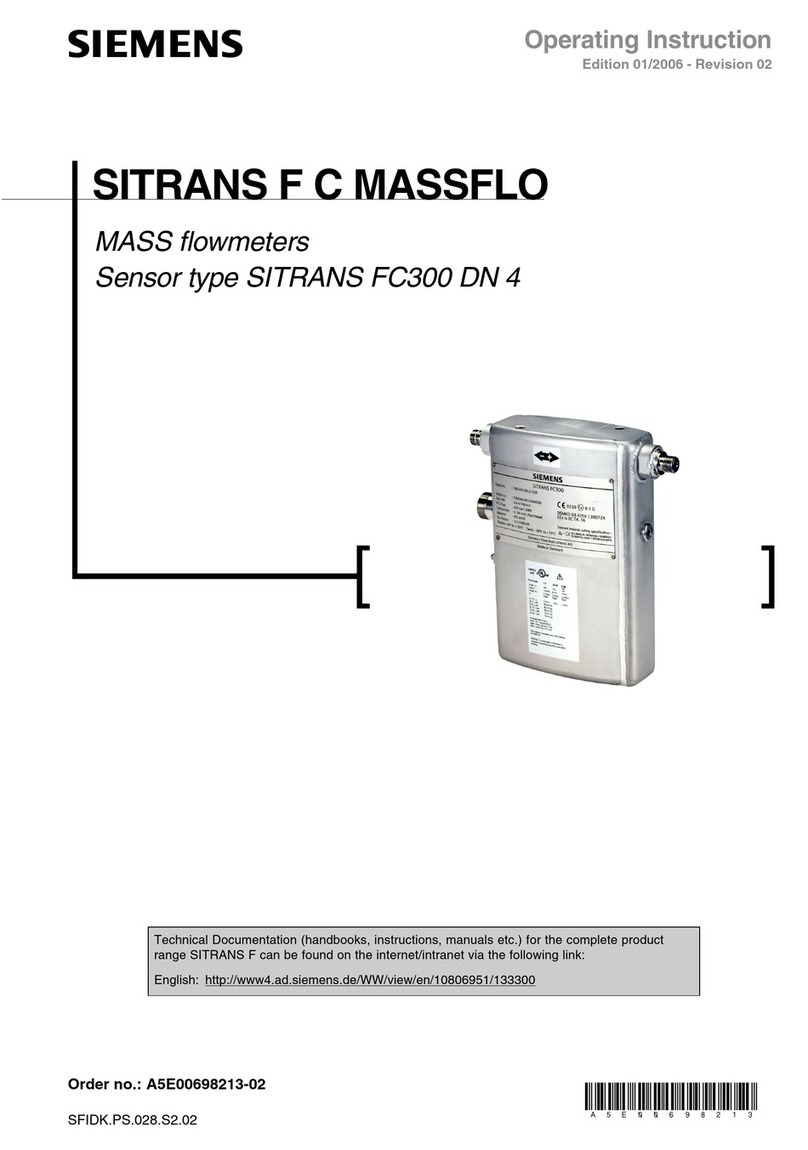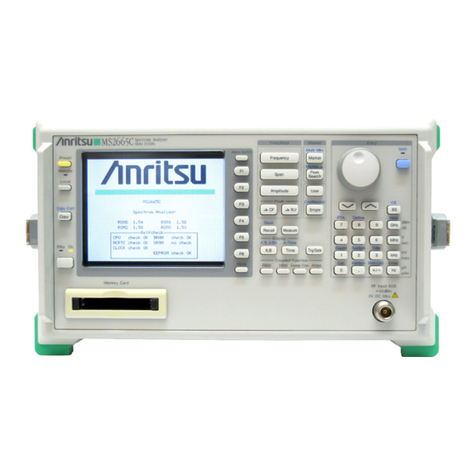BC Biomedical USP-30 User manual

User Manual
USP-30
Ultrasound Power Meter

CONTENTS
I. INTRODUCTION............................................................... 2
II. SPECIFICATIONS ............................................................ 3
III. PUTTING THE USP-30 INTO SERVICE........................... 4
IV. HOW TO OPERATE THE USP-30.................................... 5
V. DEGASSED WATER AND TRANSDUCER
CONSIDERATIONS .......................................................... 6
VI. CONVERSION CHART - FROM GRAMS TO WATTS ..... 7
VII. WARRANTY ..................................................................... 8
VIII. TECHNICAL SUPPORT ................................................... 8

I. INTRODUCTION
The Model USP-30 Ultrasound Power Meter is designed to measure the ultrasonic power output of
diagnostic or therapeutic transducers up to 30 watts using the radiation force balance method. The
USP-30 consists of a precision mechanical balance that measures from 0.01 to 10.00 grams, a
conical target suspended on a triangular hanger, a water tank, a transducer support rod with clamp,
and a carrying case. The transducer to be tested is center-mounted over the conical target with the
transducer's radiating area immersed facedown in the water medium.
The Model USP-30 Ultrasound Power Motor measures the average ultrasonic power by measuring
the radiant force exerted by the transducer on the conical target. This target is coupled to the
precision mechanical balance that is used to measure the gram-mechanical force due to the
ultrasonic radiation. The gram force is directly proportional to the ultrasound power in watts when
multiplied by a constant of 14.65. Therefore, a 2.05 gram force would be equal to 30 watts of
ultrasound radiation.
The heart of the USP-30 system is its air-filled conical target. The weight of this target is nulled to a
minimum by using its own buoyancy. Incident ultrasound energy is mechanically transferred from
the target to the precision balance where it is manually measured. Butyl rubber walls inside the water
test tank absorb reflected ultrasound energy. This system provides a sturdy instrument with good
measurement accuracy and low cost.
2

II. SPECIFICATIONS
POWER RANGE 150 milliwatts to 30 watts
RESOLUTION ± 150 milliwatts
MIN. DETECTABLE
POWER LEVEL ± 150 milliwatts
MIN. ACCURACY ± 5%
EXPECTED ACCURACY ± 4%
DISPLAY Vernier Dial
DISPLAY SENSITIVITY ± O.01 g. or : ± 150 mW
ZEROING METHOD Manually Adjusted
TEST TANK DIMENSIONS
Outside: 5.75 in. (146 mm) dia. X 5.5 in. (140) mm) high
Inside: 4.5 in. (114 mm) dia. X 5.25 in. (133 mm) deep
TEST TANK LINING 0.5 in. (12.7 mm) Neoprene rubber
TEST MEDIUM Degassed distilled water at normal room temperature.
TEST TANK LIQUID
CAPACITY 1350 ml. Max.
CONE TARGET 3.5 in. (89 mm) dia.
X 2 in. (51 mm) high
CARRYING CASE 19 in. (483 mm) high
X 17 in. (432 mm) long
X 7 in. (178 mm) wide
LINE POWER Not Required
SHIPPING WEIGHT 18 lbs.
3

III. PUTTING THE USP-30 INTO SERVICE
1. Remove the lid from the test tank.
2. Remove and carefully unpack the conical target stored in the test tank. Set the target aside until the
tank is filled.
3. Slowly pour recently degassed water into the test tank and avoid any turbulence that might produce
air bubbles. Fill the test tank to approximately ¼ inch from top of tank. The water must be at room
temperature. If degassed water is not available, sterilized or distilled water may be used, however, a
small error of approximately 3% to 5% may be introduced above the 10 to 15-watt output level. DO
NOT USE TAP WATER.
4. Immerse the conical target into the test tank at an angle to avoid any air bubbles from being
trapped under the target. Shake the target gently to release any attached air bubbles. Position the
cone target so that it is pointed upright in the center of the tank.
5. A triangular hanger, with its bass in the horizontal position, is attached to the conical target using
nylon cord. Place this triangular hanger on the upper (or lower) hook of the precision balance. Verify
that the cone target is centered in the test tank and does not touch the sides of the tank.
6. Release the spring lock on the precision balance.
7. Balance the scale with the target in place and no ultrasound power applied. Each USP-30 system
is setup and balanced at the factory before shipping. The weight of the conical target, when
suspended in the test tank, is measured, recorded and marked on the balance. This is a “zero” or
“null” reading and typically ranges between 1 and 3 grams. This weight is a constant that must be
subtracted from all readings when measuring with this system. If a new target is ordered, be sure to
indicate this null reading so that an equivalent target can be supplied.
8. To verify the scale's accuracy weigh the slotted 1-gram standard (located on the base plate below
the short instruction notes) by hanging it on the upper (or lower) scale hook and re-balancing the
scale. The reading should be 1.00 gram higher then the null reading.
9. When the USP-30 is not in use, store the target and hanger inside the test tank and replace the
watertight lid. The lid will restrain the water during transit, reduce the absorption of air into the water,
and prevent water contamination from foreign particles. If the unit will not be used for an extended
period of time, it is suggested that the water be removed from the tank and replaced when use is
required.
4

IV. HOW TO OPERATE THE USP-30
1. Place the Model USP-30 on a level and stable surface.
2. Remove the carrying case cover and the lid from water tank.
3. Pull the triangular hanger out of the water in the test tank and hang it on the upper (or lower) scale
hook. The conical target should not touch the rubber wall and the axis of the target cone should be
perpendicular to both the surface of the water and the surface of the transducer under test (TUT).
4. Unhook the scale spring lock from the balance arm. Note: Always replace the spring lock when the
USP-30 is in transit.
5. Periodically verify the accuracy of the precision balance by finding the null (or zero) value and then
weighing the 1-gram slotted standard weight by placing it on the upper (or lower) scale hook and re-
balancing the scale. A 1 gram difference should be measured between this reading and the null
reading.
6. Place the handle of the transducer under test (TUT) into the positioning clamp with the transducer's
radiating surface centered above the cone target and immersed about 1/8 to 1/4 inch into the water
and parallel to the water surface. Wipe across the transducer surface with your finger to remove any
trapped air bubbles.
7. With no ultrasound power applied, balance the scale (to null value), and then record this null
reading (for example, 3.00 grams). For convenience, this null reading may be adjusted to an even
number within the 0 to 10-gram range by using the balance compensator (a knurled nut) located at
the left of the balance arm.
8. Apply power to the TUT. Set the TUT to the desired power output (for example, 10 watts). Re-
balance the scale and find the difference reading (for example, now reading is 3.68 minus the null
reading of 3.00 grams which gives a difference reading of 0.68 gram total force). Multiply this
difference in gram readings by the constant, 14.65. The formula for total radiated power in watts is
equal to the total gram force on the precision balance (in grams) multiplied 14.65 watts/gram. To
obtain watts per square centimeter, divide the total radiated power by the effective radiating cross-
sectional area of the transducer (usually, 90% to 95% of the total transducer surface area).
9. For increased measurement accuracy, repeat the power measurement procedure a few times and
take the average reading.
10. Reading the Main and Vernier dials. Each Incremental graduation on the Main dial has a value of
0.1 gram. The Vernier dial is above the Main dial and sub-divides the 0.1 Main dial Increment down to
0.01 Increments. To obtain total gram weight, first record the number of grams and tenths of grams
indicated on the Main dial at the zero vernier graduation. See the illustration in Figure 1. To obtain
the hundredths of grams, read the value on the Vernier scale whose increment line most closely
aligns with a Main dial graduation. Add the vernier hundredths value to the main dial grams and
tenths of grams to find the total gram force. The reading shown in Figure 1 is 6.74 grams.
5

V. DEGASSED WATER AND TRANSDUCER CONSIDERATIONS
Water as a Measurement Medium*
The measurements are to be performed in water because ultrasound propagation in water closely
approximates that in tissues. The ultrasonic attenuation in water can be taken as a lower limit on the
attenuation that will be encountered in the body. Large areas in the body can consist of low
attenuating material such as urine and amniotic fluid. The use of water prevents measurements in a
more highly attenuating material such as liver equivalent gels from representing the highest possible
intensities that might be encountered in the body. A measurement temperature of 24ºC. (±3ºC.) is
chosen for convenience.
Degassed Water
Ultrasound Power measurement accuracy is affected by lowering the power reading if the water
contains more than five to ten parts per million of air. To de-gas, boll distilled water for one half hour,
then seal the container tightly and place it in a refrigerator. This process should give the required ppm
02quality. (A hand-held digital dissolved oxygen test meter is available from BC Group International,
Inc. that will directly measure from 0 to 20 ppm dissolved oxygen. Ask for Model DOT-20 Dissolved
Oxygen Tester). The degassed water container should be made of glass or a two liter soft drink
plastic bottle. Polystyrene one- gallon jugs should not be used since they let oxygen enter with time
and degrade water quality. Before testing, pour water into tilted test tank with minimum amount of
turbulence. The test tank water surface will absorb oxygen and a change of degassed water is
recommended before each test. An alternate method of degassing water is to heat the water to the
boiling point, then pull a vacuum on it for five to ten minutes. Water temperature affects accuracy, so
it is recommended to use an ambient testing temperature of +70º F. to +75º F. Sonic energy agitates
the water surface through heating and scattering. The time duration of each test should be limited to a
few minutes. Prolonged testing, particularly at higher power levels, will show visible signs of air
bubbles on the transducer, target and the absorbing rubber surface.
Transducer Wetting and Placement
After tilting the transducer into the water at a 45º angle, verify that its surface is uniformly wetted if
not, wipe the surface clean. The transducer should be pointed toward and center-positioned directly
above the cone target. Small measurement variations will occur due to placement of the transducer.
Try various positions above target to verify magnitude of error due to positioning.
Sonic Radiation Levels and Absorbed Energy
Measurement of power output levels of diagnostic and therapeutic ultrasound equipment have
become increasingly important to determine exact patient exposure levels and thus avoid a potential
risk to the patient. Since the Radiation Control for Health & Safety Act of 1968 and the 1976 Medical
Device Amendments to the Food, Drug. & Cosmetic Act became effective, all manufacturers of
diagnostic and doppler ultrasound equipment are required to submit information regarding their
maximum peak and average exposure level, beam patterns, and other pertinent information.
Submitted data of the early 1980's showed that for pulse echo transducers, the Spatial Peak
Temporal Average (SPTA) was less than 10 mW/cm2to 180 mw/ cm2and the Doppler SPTA levels
were loss than 600 mW/cm2. The power levels varied over one order of magnitude without any
significant change in diagnostic performance. Exposure levels for physical therapy applicator heads
ranged from 100 mw/ cm2to 3 W/cm2.
While there are no maximum limits in the United States at the present time for diagnostic and
therapeutic applicators, there is a generally accepted safe energy guideline limit. The maximum
average power output of the transducer in the SPTA intensity of the transducer (defined as the
maximum ultrasound intensity value in space averaged over a time duration) should not exceed safe
recommended levels. Typical safe figures of SPTA are 10 mW/ cm2for echo sounding and 100 mW/
cm2for Doppler devices. The maximum ultrasound SPTA for therapeutic use is 3 W/ cm2.
* Ultrasound propagation in water closely approximates human tissue and degassed water is the generally accepted test medium for
ultrasound transducers (see AIUM/NEMA Standards Publication #UL-1-1981, SAFETY STANDARD FOR DIAGNOSTIC ULTRASOUND
EQUIPMENT).
6

VI. CONVERSION CHART - FROM GRAMS TO WATTS
Measurement Watt Measurement Watt Measurement Watt
Difference Output Difference Output Difference Output
0.10 = 1.46 0.58 = 8.49 1.06 = 15.52
0.11 = 1.61 0.59 = 8.64 1.07 = 15.67
0.12 = 1.75 0.60 = 8.79 1.08 = 15.82
0.13 = 1.90 0.61 = 8.93 1.09 = 15.96
0.14 = 2.05 0.62 = 9.08 1.10 = 16.11
0.15 = 2.19 0.63 = 9.23 1.11 = 16.26
0.16 = 2.34 0.64 = 9.37 1.12 = 16.40
0.17 = 2.49 0.65 = 9.52 1.13 = 16.55
0.18 = 2.63 0.66 = 9.66 1.14 = 16.70
0.19 = 2.78 0.67 = 9.81 1.15 = 16.84
0.20 = 2.93 0.68 = 9.96 1.16 = 16.99
0.21 = 3.07 0.69 = 10.10 1.17 = 17.14
0.22 = 3.22 0.70 = 10.25 1.18 = 17.28
0.23 = 3.37 0.71 = 10.40 1.19 = 17.43
0.24 = 3.51 0.72 = 10.54 1.20 = 17.58
0.25 = 3.66 0.73 = 10.69 1.21 = 17.72
0.26 = 3.80 0.74 = 10.84 1.22 = 17.87
0.27 = 3.95 0.75 = 10.98 1.23 = 18.02
0.28 = 4.10 0.76 = 11.13 1.24 = 18.16
0.29 = 4.24 0.77 = 11.28 1.25 = 18.31
0.30 = 4.39 0.78 = 11.42 1.26 = 18.45
0.31 = 4.54 0.79 = 11.57 1.27 = 18.60
0.32 = 4.68 0.80 = 11.72 1.28 = 18.75
0.33 = 4.83 0.81 = 11.86 1.29 = 18.89
0.34 = 4.98 0.82 = 12.01 1.30 = 19.04
0.35 = 5.12 0.83 = 12.16 1.31 = 19.19
0.36 = 5.27 0.84 = 12.30 1.32 = 19.33
0.37 = 5.42 0.85 = 12.45 1.33 = 19.48
0.38 = 5.56 0.86 = 12.59 1.34 = 19.63
0.39 = 5.71 0.87 = 12.74 1.35 = 19.77
0.40 = 5.86 0.88 = 12.89 1.36 = 19.92
0.41 = 6.00 0.89 = 13.03 1.37 = 20.07
0.42 = 6.15 0.90 = 13.18 1.38 = 20.21
0.43 = 6.30 0.91 = 13.33 1.39 = 20.36
0.44 = 6.44 0.92 = 13.47 1.40 = 20.51
0.45 = 6.59 0.93 = 13.62 1.41 = 20.65
0.46 = 6.73 0.94 = 13.77 1.42 = 20.80
0.47 = 6.88 0.95 = 13.91 1.43 = 20.95
0.48 = 7.03 0.96 = 14.06 1.44 = 21.09
0.49 = 7.17 0.97 = 14.21 1.45 = 21.24
0.50 = 7.32 0.98 = 14.35 1.46 = 21.38
0.51 = 7.47 0.99 = 14.50 1.47 = 21.53
0.52 = 7.61 1.00 = 14.65 1.48 = 21.68
0.53 = 7.76 1.01 = 14.79 1.49 = 21.82
0.54 = 7.91 1.02 = 14.94 1.50 = 21.97
0.55 = 8.05 1.03 = 15.09 2.00 = 29.30
0.56 = 8.20 1.04 = 15.23 2.50 = 36.62
0.57 = 8.35 1.05 = 15.38
7

VII. WARRANTY
BC Biomedical warrants that the USP-30 will substantially conform to published specifications and to
the documentation, provided that it is used for the purpose for which it was designed. BC Biomedical
will, for a period of twelve (12) months from date of purchase, replace or repair any defective test
system, if the fault is due to a manufacturing defect. In no event will BC Biomedical or its local
representatives be liable for direct, indirect, special, incidental, or consequential damages arising out
of the use of or inability to use the USP-30, even if advised of the possibility of such damages. BC
Biomedical or its local representatives are not responsible for any costs, loss of profits, loss of data,
or claims by third parties due to use of, or inability to use the USP-30. Neither BC Biomedical nor its
local representatives will accept, nor be bound by any other form of guarantee concerning the USP-
30 other than this guarantee. Some jurisdictions do not allow disclaimers of expressed or implied
warranties in certain transactions; therefore, this statement may not apply to you.
VIII. TECHNICAL SUPPORT
BC Biomedical’s USP-30 is backed by a superior support staff. If the USP-30 ever fails to work
perfectly, please contact the Technical Support Staff.
Written Communications
You may write a letter with your comments and send it to:
BC Biomedical
BC Group International, Inc.
PO Box 25125
9415 Gentry Ave
St. Louis, MO USA 63125
OR
Phone Support
You can telephone the Technical Assistance Center at 314-638-3800 or 1-800-242-8428
between 8:00 AM and 4:30 PM Central Standard Time (CST) Monday through Friday, except
holidays.
Whichever method of contact you choose, please provide the following information:
•Product name and serial number
•Revision level of your software
•The specific steps which reproduce your problem
•Any error codes
•A daytime phone number, fax number, and/or email address (if available)
•Your name / company
8
Table of contents
Other BC Biomedical Measuring Instrument manuals
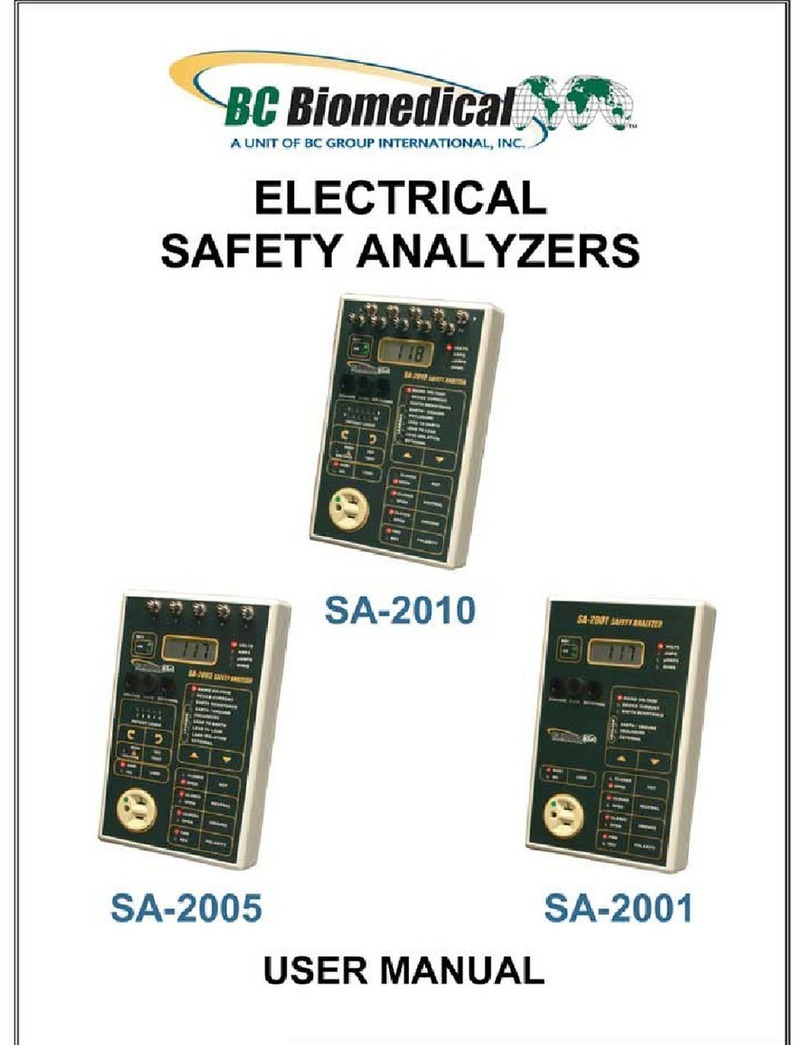
BC Biomedical
BC Biomedical SA-2010 User manual

BC Biomedical
BC Biomedical SPO-2000 User manual
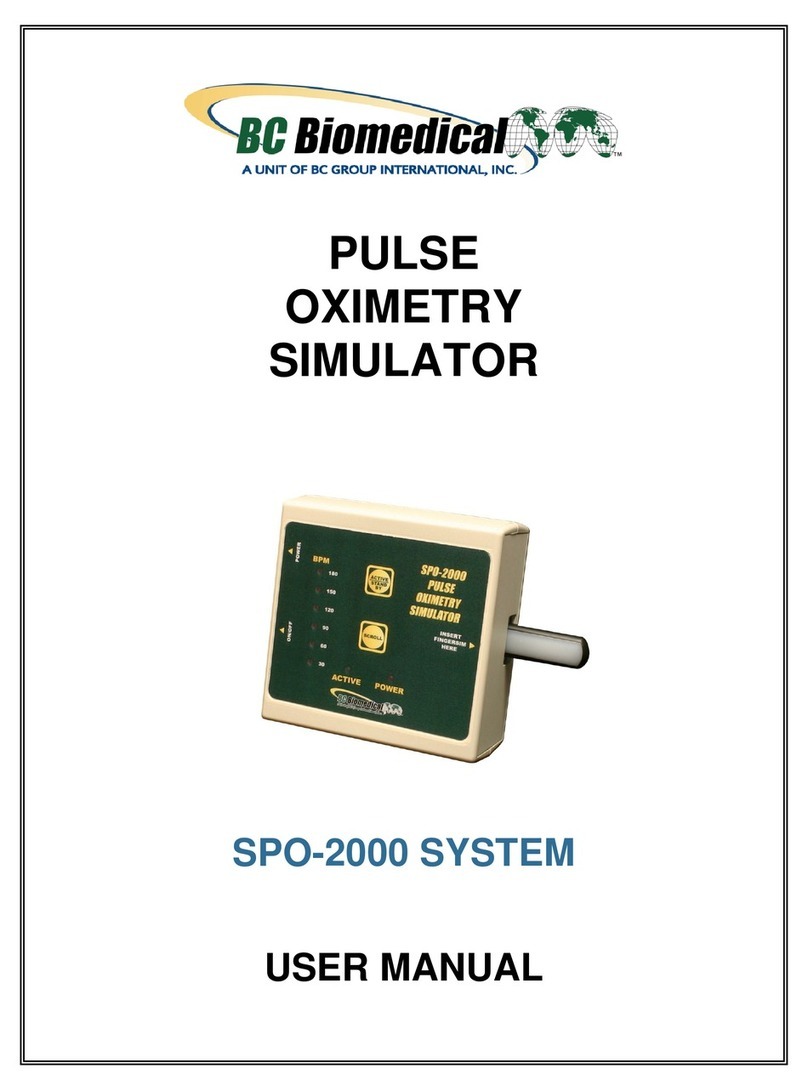
BC Biomedical
BC Biomedical SPO-2000 User manual
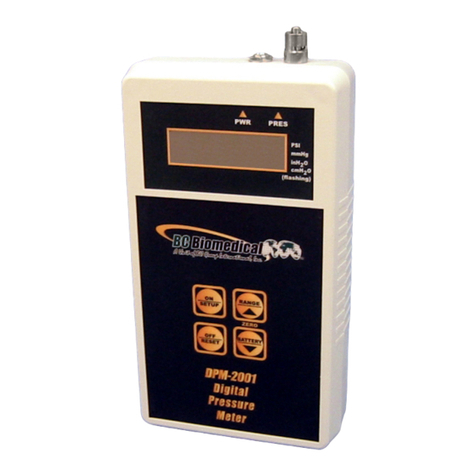
BC Biomedical
BC Biomedical DPM-2001 User manual

BC Biomedical
BC Biomedical USP-100A User manual
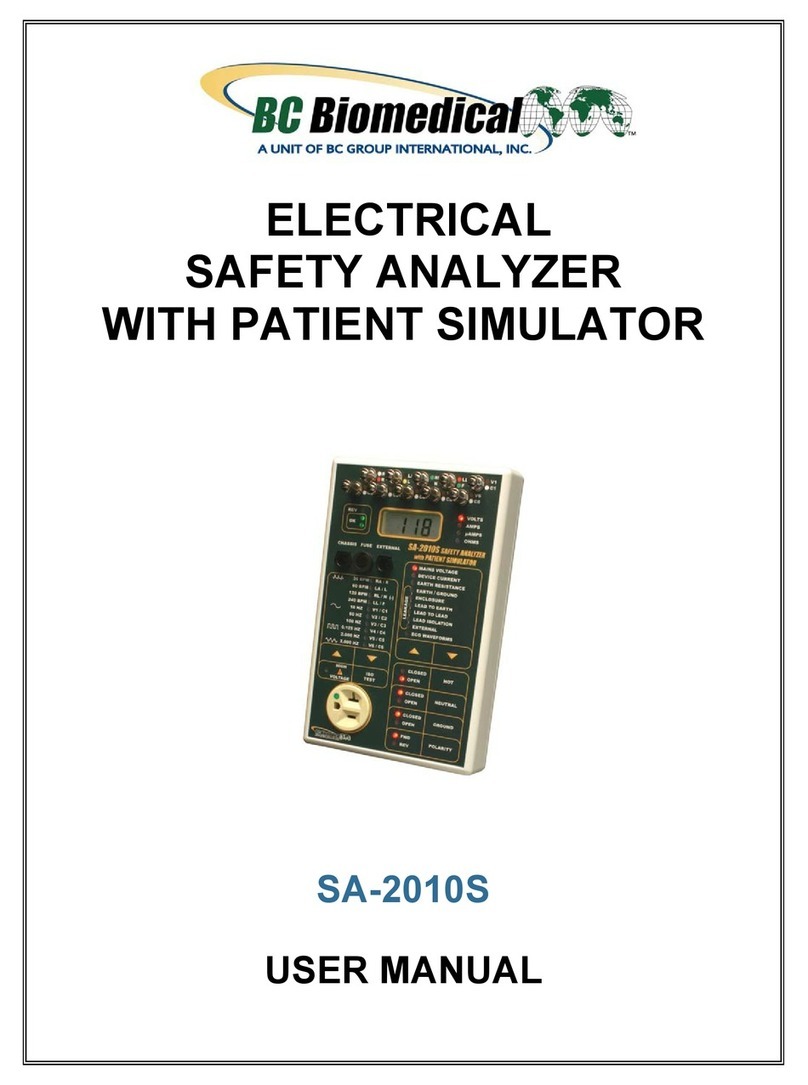
BC Biomedical
BC Biomedical SA-2010S User manual
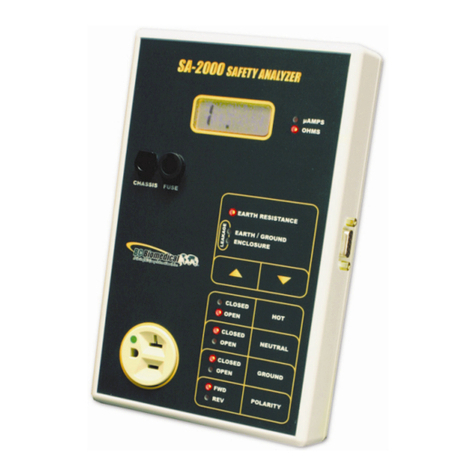
BC Biomedical
BC Biomedical SA-2000-INTL User manual

BC Biomedical
BC Biomedical SA-2010S User manual
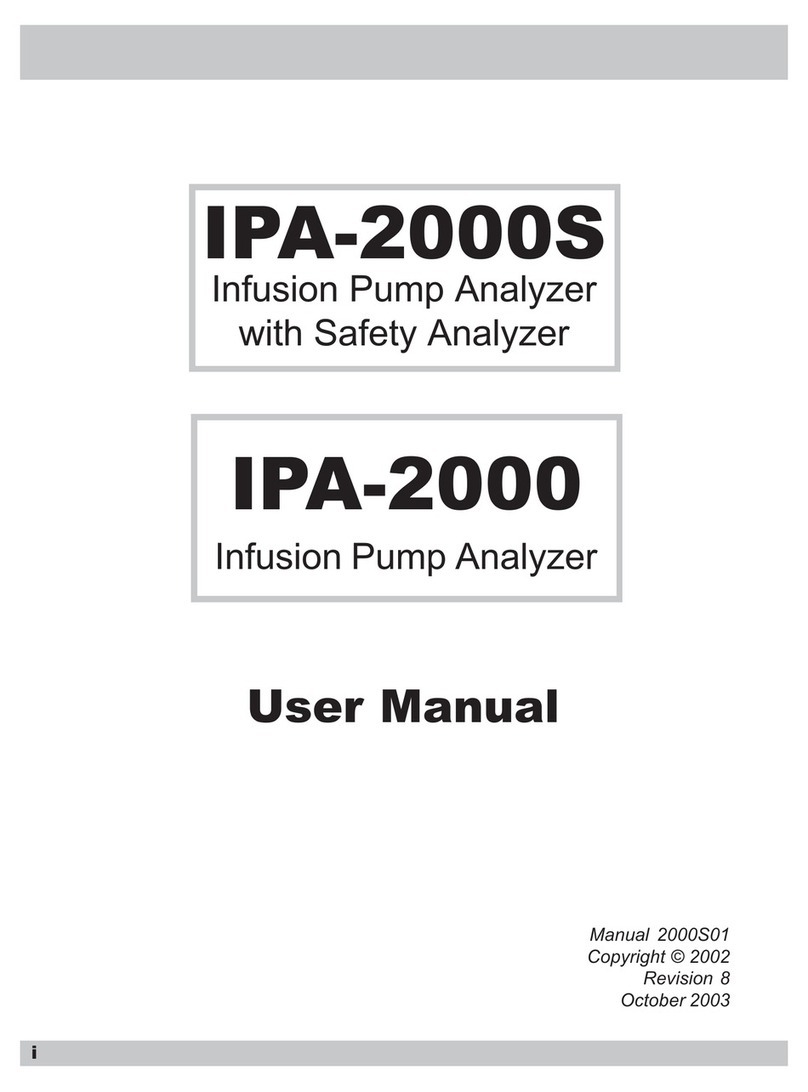
BC Biomedical
BC Biomedical IPA-2000 User manual

BC Biomedical
BC Biomedical ESU-2400 User manual
